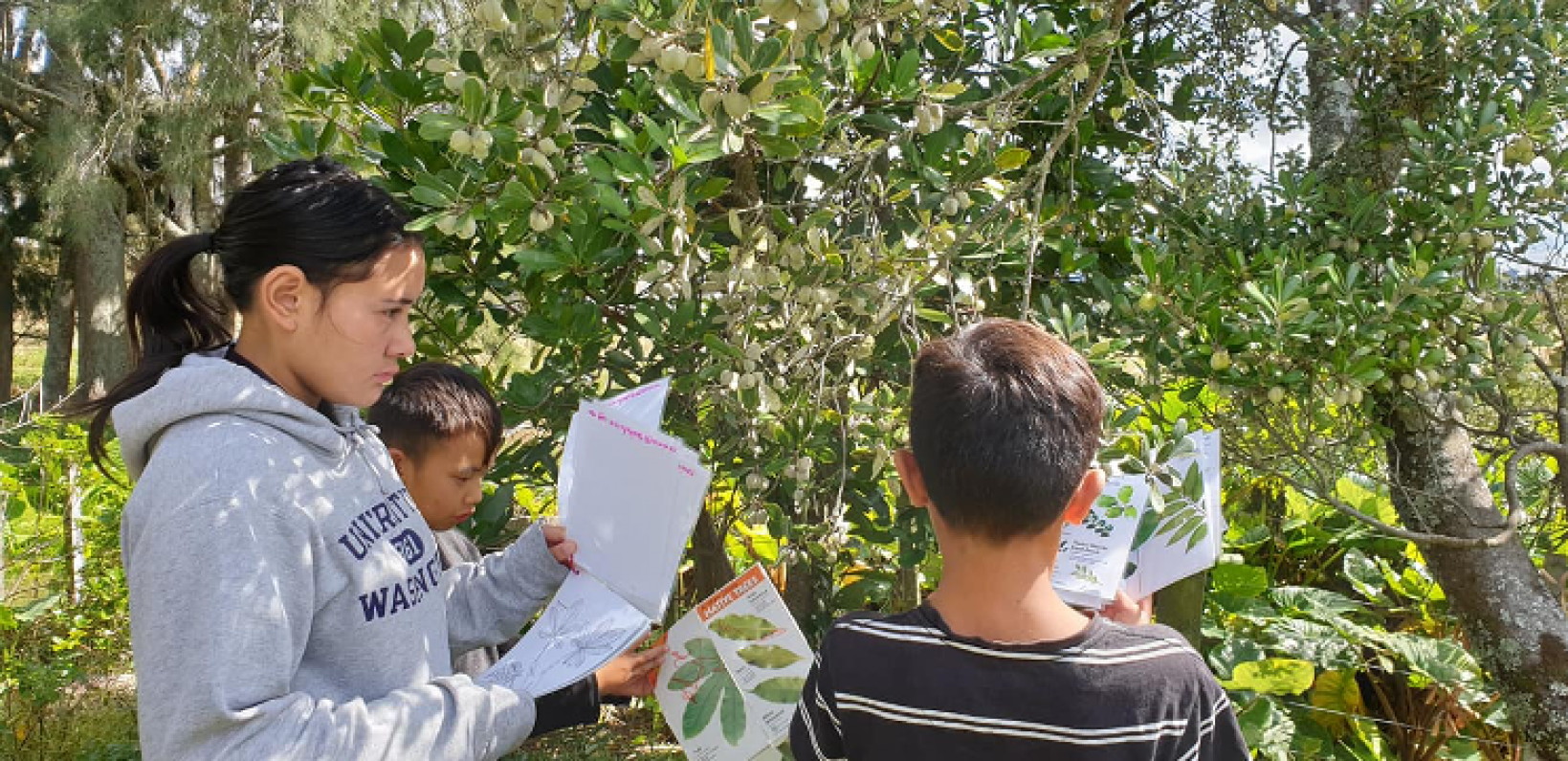
Our reality of work and home boundaries was been reshaped. Through a range of ways our people have modelled activities so that others can see the ease of undertaking them and the benefits for people and the environment.
The Toimata Foundation team met online, and part of the kaupapa for the day was a mapping exercise – to explore our places and see what supports us and our whānau to have sustainability, resilience and hauora at this time.
“Through our mahi we are all continuing to contribute to the health, sustainability and resilience of our communities. In this time of change and uncertainty our kaupapa and our mahi is even more valuable. We are focusing on the positive actions that we and our communities can take, learning together and strengthening connections with each other and our beautiful taiao. Rather than look at what we currently can’t do we are asking, “What might be possible now that wasn’t before?” With great respect to the serious nature of this situation, there is some new adventuring to be done.” – message from Heidi Mardon, Toimata Foundation CE.
Within our two programme teams, these are some of the activities, actions and reflections over this time.
BANNER IMAGE: Pō hoata: I hanatu mātau ki te ako i ngā ingoa o ngā rākau kei tō mātau kaenga.
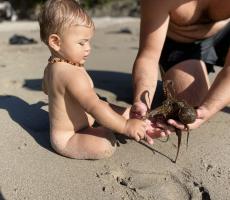
Tangaroa-whakapau: He tūhura i te takutai te mahi.
Te Aho Tū Roa
An intentional practice to attune with and be guided by the maramataka (Māori lunar calendar) was nurtured throughout this time by Te Kāhui o Te Aho Tū Roa. The following images and kōrero are reflections of this special time, with reference to the pō (lunar phase) recorded with the observations.
“With the advent of COVID-19, most activities were postponed or shifted to the second half of the year. This forced us into drawing on our puna waihanga (creative potential) to consider how we can continue to live and breathe the kaupapa. New energies organically emerged, bringing together creative, innovative approaches to living and sharing our journey, guided by the maramataka Māori. During that time, we all noticed Rangi and Papa breathing in sync.” – Poutautoko
“We formed the intention to sit, observe, and engrain maramataka into our daily lives as an active practice of reclamation – reclaiming our connection to taiao, our atua, and ourselves. The approach was to spend time with whānau, exploring the guidance offered by the maramataka Māori, and then to share our learning and experiences with others via social media. The intention was to inspire everyone to ‘puta ki taiao’ and to provide a working example of the maramataka Māori in the daily lives of our whānau.” – Poutautoko
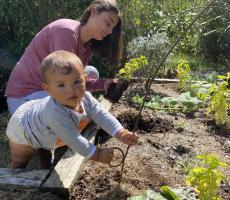
IMAGE: Tamatea-ā-āio: E karanga mai ana te māra ō Rongo.
“I have appreciated the support that our whānau has received from Te Aho Tū Roa/ Toimata Foundation during ‘lockdown’. I have eight weeks of observation logged into my app, which has included our whānau energy levels, activities done, weather, sleeping patterns, the presence of ngāngara, rākau, what kai is available, noticing how the whenua feels in the ata as I head out for my morning karakia and meditation, the sound of the sea from my ruma and the manu I see on our whenua. In time I hope to be able to interpret the data and recalibrate our maramataka taiao here in Ūawa.” – Poutautoko reflection
“Nīti rawa atu koutou!! Whu!! He whakapapa mō te whānau ā Tāne! Ooo, me ngā kupu hou! Kia ora sis!” – Feedback received online after posting about our mahi.
“The maramataka has been one of the enlightening māramatanga of this time. I have a growing awareness around my own energies and have become a lot more alert as to what is happening within taiao – like where Tamanuiterā and Hina are rising, what clouds are in the sky, what birds are present, what leaves are falling, what kai is bountiful, what seeds are dropping, and what Tāwhirimātea is doing. These are some of the indicators we’ve recorded on our whānau whiteboard. Where I have remembered, I have also recorded my ngoi around different marama phases. Through knowing more of myself, I am learning to unlearn, learn and relearn some things, which has helped me understand others, in particular my tamariki.
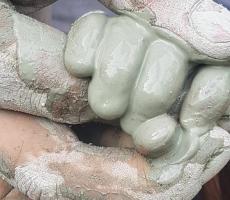
IMAGE: Uku from Te Wairahi awa. Ko te pā o Hineuku ki te kiri he tohu aroha, he tohu whenua, he tohu whakapapa.
Hēoi anō, the past few months have been monumental for our planet to rest, if only for a very brief moment. With elections coming up month, I hope taiao remains at the fore of decision-making. As we showed the world during this pandemic, New Zealand needs to keep pushing for local and authentic change, and ensure Māori are well represented at the table, and are in positions of power to lead and transform their taiao and communities. Now is the time of reclamation – to taiao, to atua, and to ourselves.” – Poutautoko reflection
“Rawe whānau, pai ō koutou akomanga!” – Feedback received online.
“Tētahi tino painga o te noho kāinga, i kitea te rerenga o Tamanuiterā i te paerangi. Mai i te whare o Whitinga, ki te takanga o Te Rā, e piri tata ana ki a Hinetakurua.” – Poutautoko reflection on tracking the sun’s path for several months.
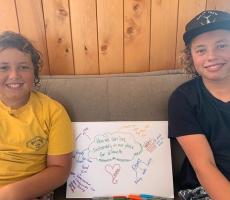
Enviroschools
Local curriculum suddenly got very local through the need to stay within a short distance of our homes. Me in My Environment, one of the foundational Enviroschools resources showed its robustness with the ability of whānau to carry out many of the activities and reflect on these – maybe even reimagine their places as they redefined their lives moving out of a state of pandemic alert. Ideas bubbled away.
IMAGE: Khan & Joel with the start of their map.
The activities in Me in My Environment help to focus on the immediate surroundings as a starting point, encouraging young people to investigate the physical aspects of their environment, while also exploring the less tangible dimensions of sustainability such as peace, diversity, cooperation, kaitiakitanga (guardianship) and fairness. After gaining a broad picture as a foundation, specific interests and topics may be explored in more depth using the five Enviroschools Theme Areas and other relevant resources. Young people are more equipped to make informed decisions if they have explored their environment (natural and built, physical and social) with all their senses, engaging their mind, heart and spirit.
Through doing this, they form connections and understand whanaungatanga and whakapapa (inter-relatedness and relationships). They gain a clearer idea of the things that they and others appreciate about their current environment and start developing ideas about what actions they could participate in for a healthy, peaceful and sustainable future.
Esther Kirk, Enviroschools National Manager, used one of the Enviroschools Kit activities, Mapping My Place, with her whānau. Her two boys Khan and Joel created a mind map around the question ‘What do we need to live sustainability for these next four weeks’? Katie Higgins (national ECE Enviroschools Coordinator) and her two boys, Ollie and George also worked on their Home Vision Map.
IMAGE: Higgins family map
The National hui for Enviroschools facilitators held April 22nd was delving into new territory for our national gathering – bringing together 120 people from our network- national team, regional coordinators and facilitators from around the motu in a low carbon way via zoom. Our 2020 virtual hui was an opportunity to connect to the kaupapa, to each other and taiao. This affirmed the mahi /work that we were all carrying out and allowed opportunities for listening, moving about, small group discussion and deliberation.
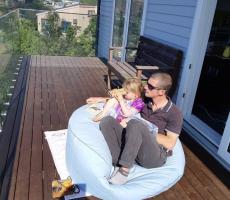
Regional facilitator teams around the motu continued supporting teachers as everyone grappled with the range of bubble environments that students are in. Innovation and creativity have been rife!
IMAGE: Matt and Lucy observe their place.
Lockdown Enviroschools Adventures continue in the Stanford bubble in Canterbury as Matt follows the Action Learning Cycle with a pre-schooler! After ‘identifying the current situation’ with a garden bird survey, Lucy wanted more and different birds to visit. She ‘explored alternatives’ by flicking through some of the EfS booklets and found a picture of someone making pine-cone bird feeders. “Can we do that, Dad?” means ‘take action’ to Enviroschools folk and Lucy set about gathering seeds from her own sunflower. “I think different birds will come now”, declares Lucy.
Meanwhile in a small village just out of Te Aroha, Waikato facilitator Ruairi was facilitating his family. Ruairi and his whānau started some planning for the best future as a family. With Ori and Ani being only 8 and 6 Ruairi thought the task might become torturous with a stream of questions like “‘how do we spell so and so?” so he did the writing in order that the children could get their thoughts out. They brainstormed how they were already practicing sustainability then created a map of how the family uses their house and property – “where is fun, noisy, scary, interesting?” And then finally they came up with a shared family vision – “what we want to do, and act like in the future”. Ruairi reports that “it looks like it’s lots of growing food, a bike track and tree house making, buying less stuff, so we can go around NZ lots more!
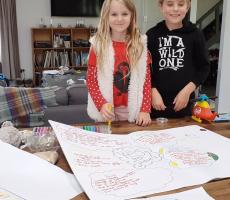
IMAGE: Kelly family mapping
Some facilitators have undertaken the creation of short videos as they explore their place and build their whānau Pool of Knowledge – Puna Mātauranga. Other responses, to this different way of supporting our network, have been to seek out quality material from other organisations that adds value to ours.
Modelling our kaupapa over the lockdown period has included the support and care of those who deliver the Enviroschools Programme. One aspect of this is a wellness Zoom check-in each week. Sandy Bell-Jameson Professional Development Co-ordinator for Enviroschools has led these gatherings and the feedback has been very positive.
“Thank you for the zoom catch up/wellness check in today. It felt lovely to connect with everyone, hear how things are going for each of them, as well as having the opportunity to share. Being new to Enviroschools, these check-in’s have also been a great way to get to know the other facilitators in the team. I may be in my small bubble in Kawakawa, but it is amazing to know I have the support of the Enviroschools community.” – Judy
“Thank you, Sandy, for facilitating today’s wellness zoom. It was helpful to hear people express their thoughts. I also took comfort in the fact that some of the internal conversations I am having are also being experienced by others. Kia kaha.” – Nicky
It has been uplifting to see how our network has responded to the current situation, modelling great practice, collaborating, connecting with the taiao, observing, reflecting, and promoting opportunities for inter-generational learning.
IMAGE: Higgins backyard biodiversity. Ollie and George sort their collection of natural gifts before making a colour rainbow.





